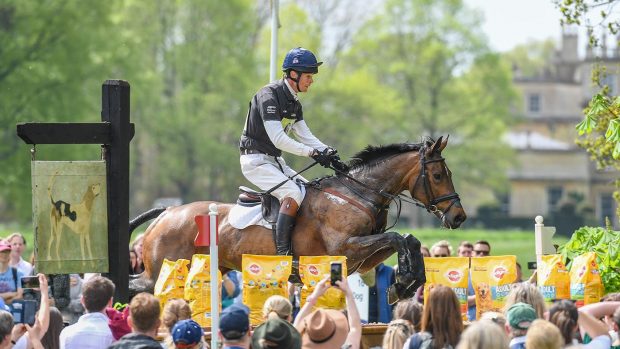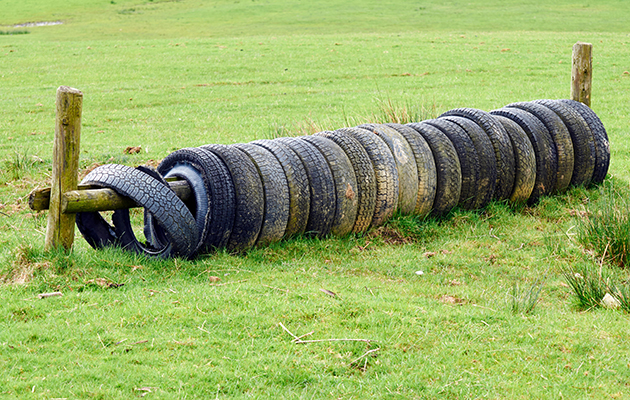Don’t let the weather — or a lack of transport, funds or facilities — stop you training your horse for cross-country. Try the following exercises that can be ridden in any arena or field, or on the gallops
In order to go cross-country well, it’s vital to develop a feel for jumping out of the 3 different canters required, says top trainer and Fellow of the British Horse Society Caroline Moore. You need to develop this, along with training the “gear changes” that are necessary on a cross-country course.
Exercise 1: riding through the gears
In an arena, field or on the gallops, practise riding your horse in the following “gears” — bringing him back to you and sending him on again as appropriate.
1st gear: Trot — occasionally used for the leafpit type of fence [large drops], ditches, steps and water with young horses.
2nd gear: Coffin canter — a short-stepping, high-powered canter often used for fences where there is a surprise for the horse on landing, such as a ditch or water, which is when the horse may need an extra stride to read the question. You will often see a rider incorrectly use the hand without the leg and kill the canter’s power.
3rd gear: Showjump-type canter — this has a bigger step than the coffin canter and is required for vertical rails or fences that are related to each other with a distance. This canter must be forward, well balanced and ridden with a soft hand.
4th gear: The gallop — this is the speed that most cross-country fences are jumped out of, including brushtops, rolltops, spreads and tables. This pace is not top speed, but should be balanced with power and the hocks put more underneath four or five strides out.
5th gear: Top speed — this is not generally jumped out of.
Exercise 2: simulated cross-country
Once you have developed the three different canters, set up these three obstacles:
* An upright set of rails (representing a ditch or fence that is downhill on the landing)
* A double of skinnies (simulating accuracy questions on a related distance)
* A triple bar (replicating a brush or wider cross-country fence)
Set off generating a good fourth gear and practise over the triple bar. Next, utilise all three fences and practise moving from fourth to third (for the skinnies) to second gear (for the upright) as appropriate.
This exercise trains the rider to find out how far away from the fence the horse needs setting up for that obstacle. It also helps the rider’s eye to develop.
While completing the exercise, practise your gallop seat and build a more secure lower leg.
For further advice on how to school over simulation cross-country fences in the arena, don’t miss our feature in Horse & Hound’s latest one-shot, Horse & Hound Training
Follow these 10 tips to banish competition nerves




